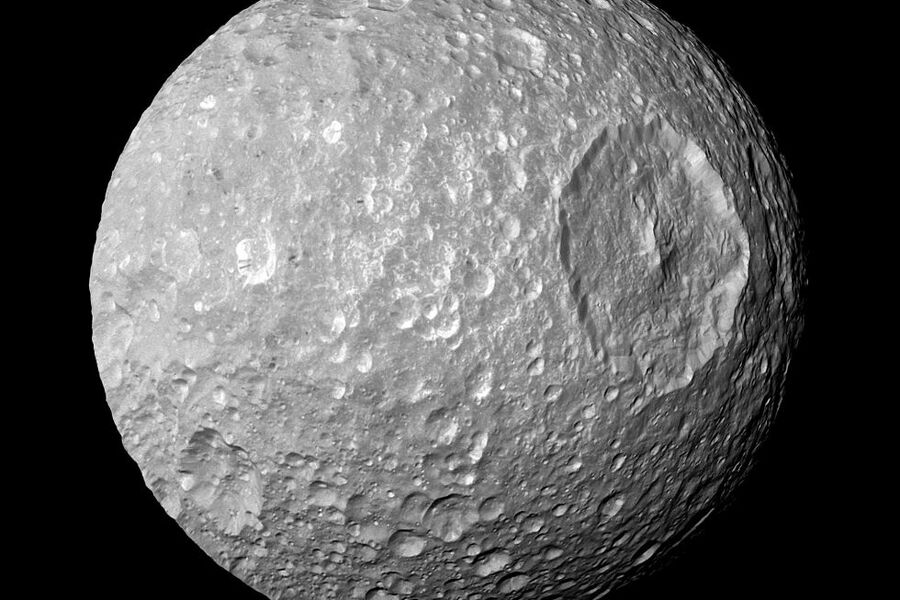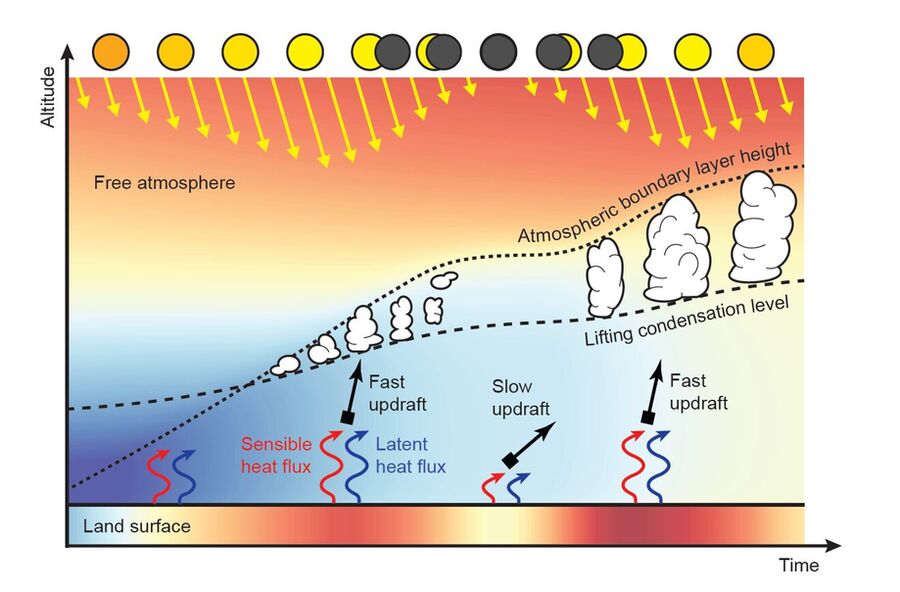
© HadelProductions/Getty Images
Scientists have discovered a key warning sign before a crucial Atlantic current collapses and plunges the Northern Hemisphere into climate chaos.
The Atlantic Meridional Overturning Circulation (AMOC) carries warm water north from the Southern Hemisphere, where it releases heat and freezes. The freezing process concentrates salt in the non-frozen portion of the ocean water; this extra-saline water sinks, travels back south and picks up heat again, restarting the conveyor belt. (The Gulf Stream is part of this belt.)
This release of heat helps keep Europe, and to some extent North America, balmier than it otherwise would be. But
sediment records over the past 100,000 years suggest that, at times, the AMOC has shut down abruptly, leading to major climate shifts over mere decades.
Comment: Comments:
1)
The study mentioned in the article tested perhaps an earlier hypothesis expressed in:
Salty oceans provide early warning for climate change (June 2007)
Monitoring the saltiness of the ocean water could provide an early indicator of climate change. Significant increases or decreases in salt in key areas could forewarn of climate change in 10 to 20 years time. Presenting their findings at a recent European Science Foundation (ESF) conference, scientists predicted that the waters of the southern hemisphere oceans around South Africa and New Zealand are the places to watch.
2)
The meaning of climate change, as the article uses it can be gathered from looking at what else the same publication has published, see
this search result. Exploring one of the results, two days before the above mentioned study was published on
February 9, 2024, there was a study published on
February 7:
Addressing climate change with behavioral science: A global intervention tournament in 63 countries, they write in their abstract:
Effectively reducing climate change requires marked, global behavior change. However, it is unclear which strategies are most likely to motivate people to change their climate beliefs and behaviors. Here, we tested 11 expert-crowdsourced interventions on four climate mitigation outcomes: beliefs, policy support, information sharing intention, and an effortful tree-planting behavioral task. Across 59,440 participants from 63 countries, the interventions' effectiveness was small, largely limited to nonclimate skeptics, and differed across outcomes: Beliefs were strengthened mostly by decreasing psychological distance (by 2.3%), policy support by writing a letter to a future-generation member (2.6%), information sharing by negative emotion induction (12.1%), and no intervention increased the more effortful behavior — several interventions even reduced tree planting. Last, the effects of each intervention differed depending on people's initial climate beliefs. These findings suggest that the impact of behavioral climate interventions varies across audiences and target behaviors.
If "Effectively reducing climate change requires marked, global behavior change" then human activity is considered responsible, and the climate can be "fixed" by changing the behaviour of people. The politics of climate change work in favour or arguing for more control.
3)
In the article, they write potentially as early as 2025
Scientists believe we could be veering towards this scenario once again — potentially as early as 2025 — as a result of climate change.
The link refers to an earlier news article in Live Science published July 25, 2023:
Gulf Stream current could collapse in 2025, plunging Earth into climate chaos: 'We were actually bewildered'
The headline speaks of the Gulf Stream, but the paper mentions the AMOC:
Researchers have predicted the collapse of the AMOC could happen any time between 2025 and 2095 — far sooner than previous predictions, although not all scientists are convinced.
According the the current article: "
The team found that about 25 years before the AMOC collapses, this flow reaches a minimum)." This could be interpreted to mean that If they come out next year and say the minimum was reached in 2024, then something drastic would happen in 25 years, or around 2050. However what the study actually says is "The
FovS minimum occurs 25 years (9 to 41, 10 and 90% percentiles) before the AMOC tipping event." That is there is an interval of probability, with a 10 % chance it is less than 9 years and a 10 chance it is more than 41 years.
The abstract from the article in
Nature Communications from July 2023 reads:
The Atlantic meridional overturning circulation (AMOC) is a major tipping element in the climate system and a future collapse would have severe impacts on the climate in the North Atlantic region. In recent years weakening in circulation has been reported, but assessments by the Intergovernmental Panel on Climate Change (IPCC), based on the Climate Model Intercomparison Project (CMIP) model simulations suggest that a full collapse is unlikely within the 21st century. Tipping to an undesired state in the climate is, however, a growing concern with increasing greenhouse gas concentrations. Predictions based on observations rely on detecting early-warning signals, primarily an increase in variance (loss of resilience) and increased autocorrelation (critical slowing down), which have recently been reported for the AMOC. Here we provide statistical significance and data-driven estimators for the time of tipping. We estimate a collapse of the AMOC to occur around mid-century under the current scenario of future emissions.
In other words the whole stick is that changes to the climate are pinned on human activity. What could be wrong with that?
4)
The Earth exists in a cosmic environment that also undergoes changes:
For some links to this topic:
Behind the Headlines: Earth changes in an electric universe: Is climate change really man-made? (2014 there is a transcript) see also:
Adapt 2030 Ice Age Report: Interview with Laura Knight-Jadczyk and Pierre Lescaudron (2018)
Adapt 2030 Ice Age Report: Interview with Laura Knight-Jadczyk and Pierre Lescaudron (Part 2) (2018)
In short, 2025 is not likely when one looks into what the different models and statistical results actually say. However, those who argue for no climate change could be more off than those that hype it, if one considers the climate change agenda as a possible screen for earth changes, though most who promote the carbon footprint nonsense would be as blind to that possibility as those who claim all is normal.
5)
Other articles on SOTT that mention and discuss Atlantic Meridional Overturning Circulation (AMOC) (Wiki) and the thermohaline circulation (Wiki) are:
6)
Regarding other influences on weather and the climate:
Solar physicist's research discovers second solar cycle - sees global cooling ahead
But there is also:
Ocean Warming, Not Global Warming: Hydrothermal "Megaplume" Found in Indian Ocean
The deep sea is slowly warming7)
The politics that trails "climate change" research
It can hard to separate politics from global warming science. According to the president of the European Central Bank be prepared to renounce banknotes, and accept changes to the way your bank is controlled, all for the sake of countering climate change:.
One way or the other, changes are likely, be they earth changes, climate changes, or changes to the political and financial systems. The official excuse for many political measures is global warming caused by human activity, as promoted by a stream of papers and panic stirring headlines, videos and news reports, but is there more to it than that? Looking around, there have been substantial disclosures and admissions about the human-alien interaction, to the point that in spite of efforts to suppress and some beating around the bush, there may in fact be something that could be of greater importance than whether or not human activity affects the climate over which. along with various wars, economic woes and "pandemics", societies are being distracted.















Comment: Other research has shown that understanding the differences between the sexes, as well as between races, is crucial in order to be able to provide the best possible healthcare.
And research highlighting these differences isn't new, as this 2018 article notes: How genetics is proving that race is not necessarily a social construct: